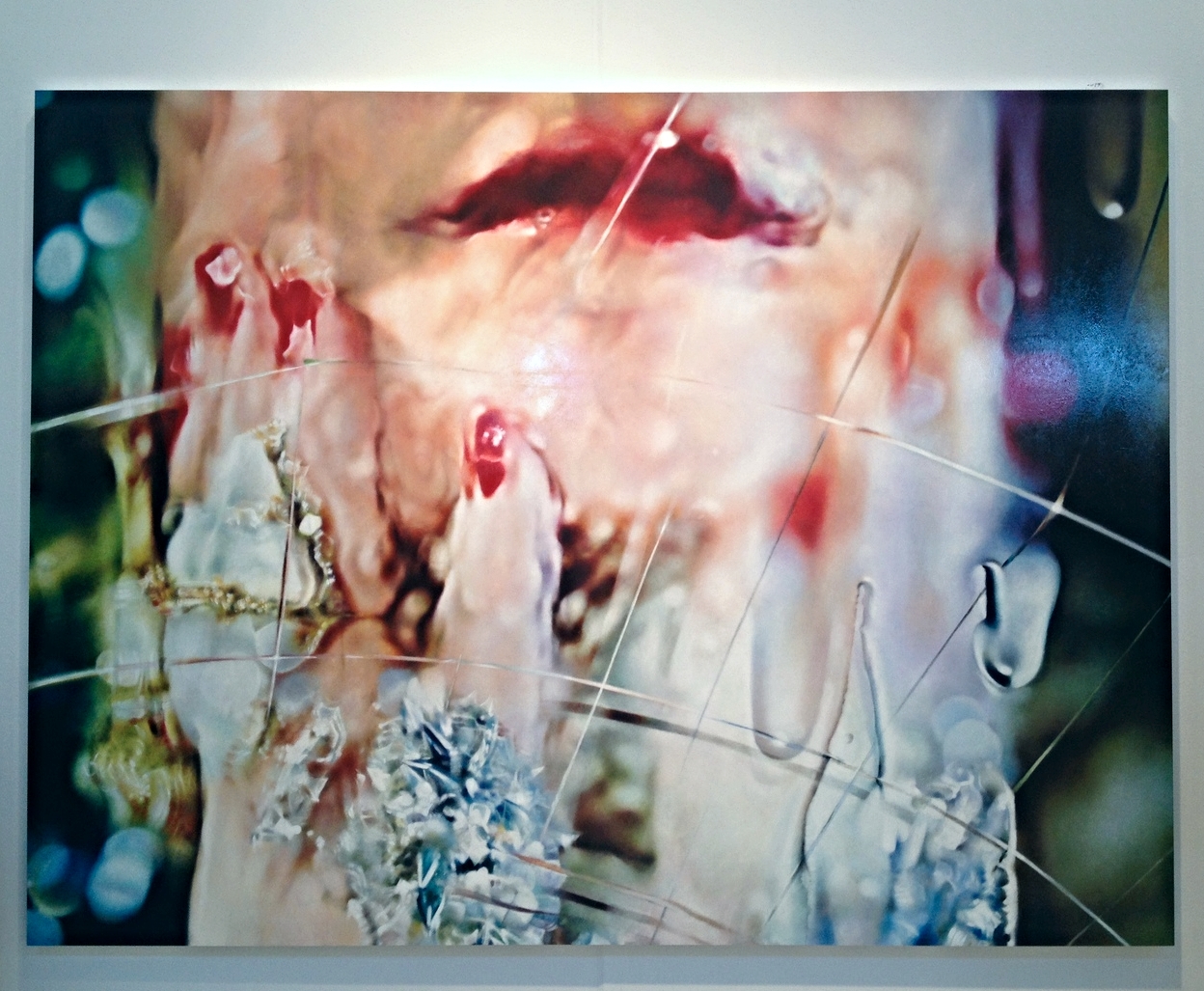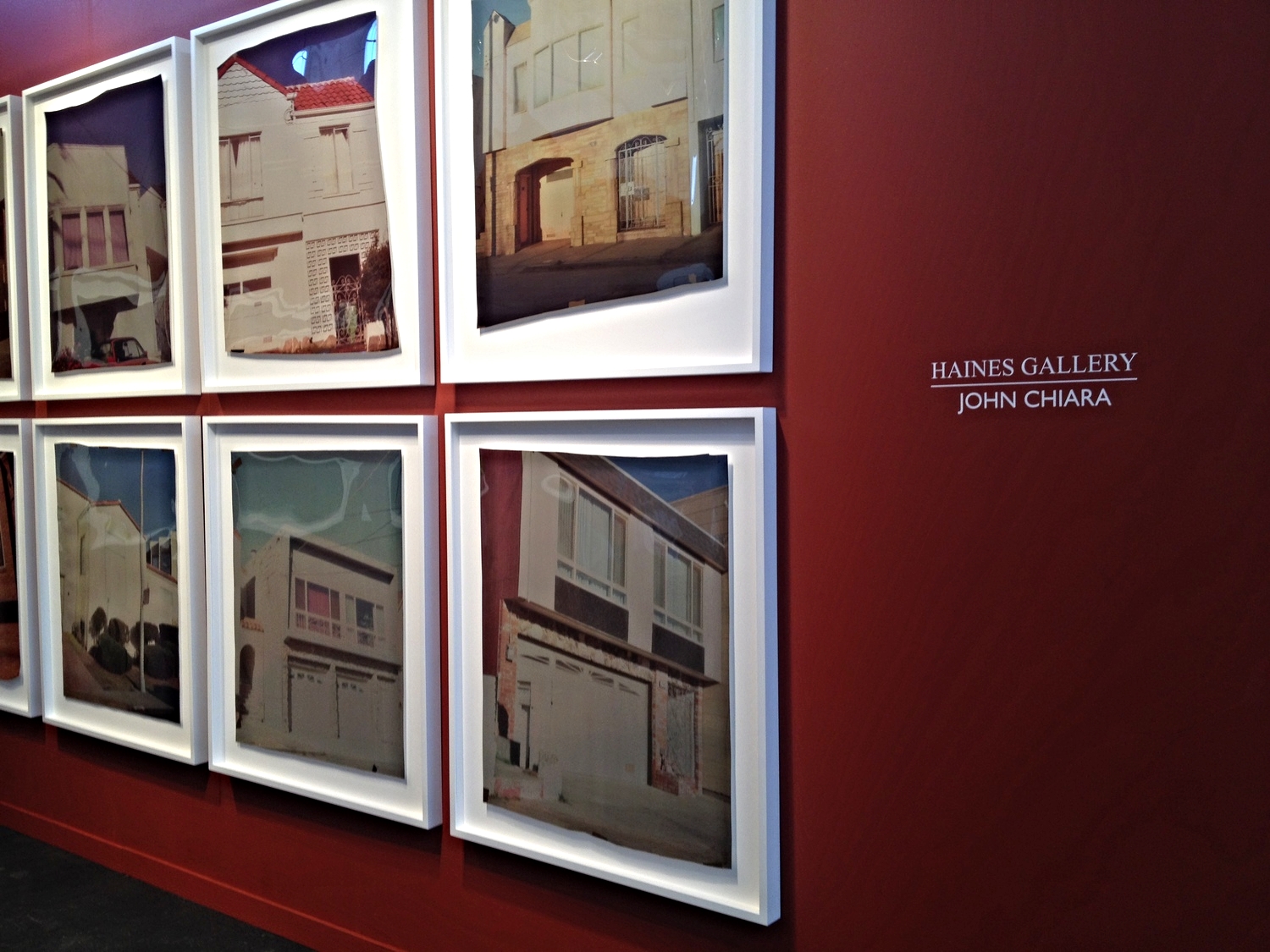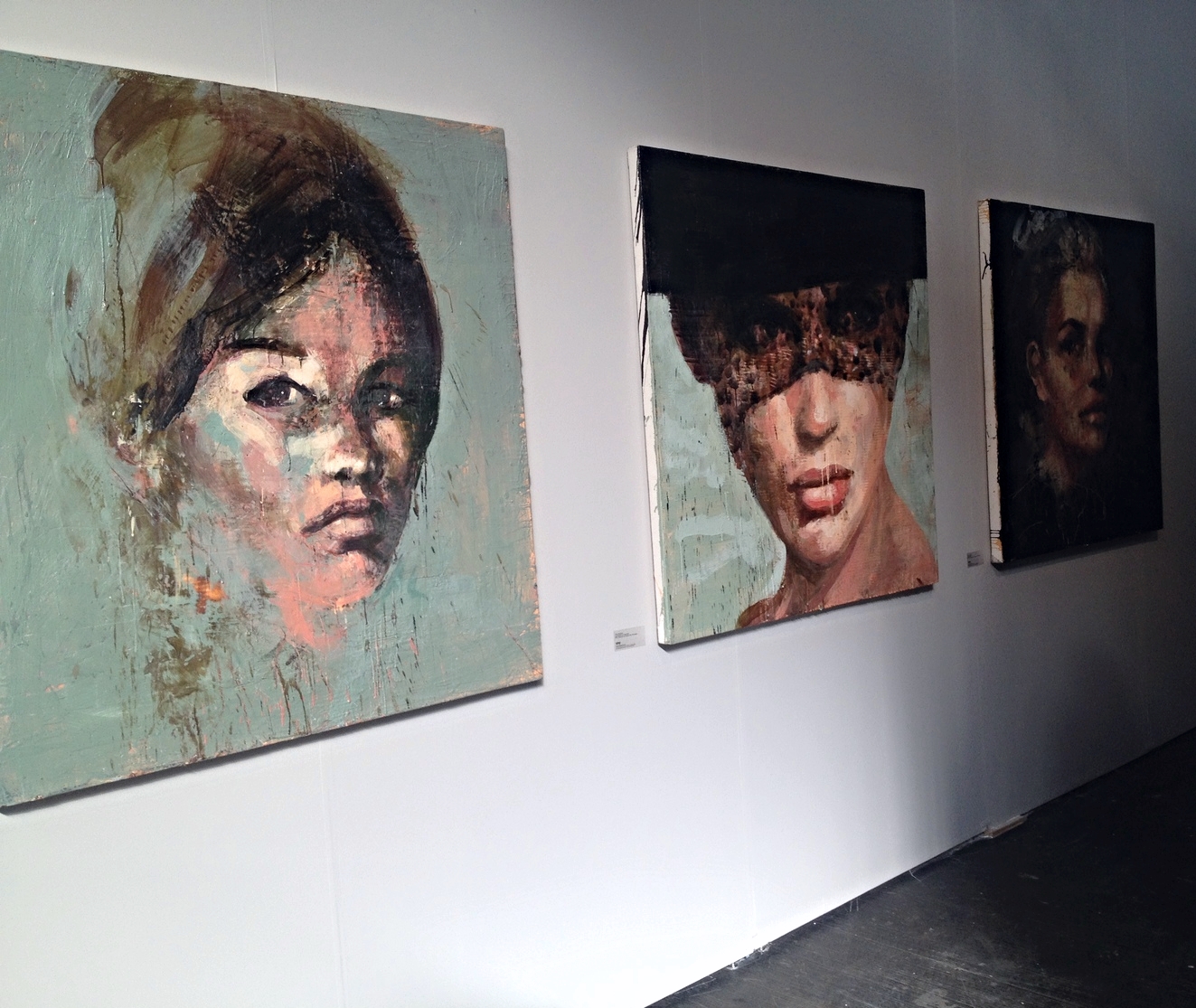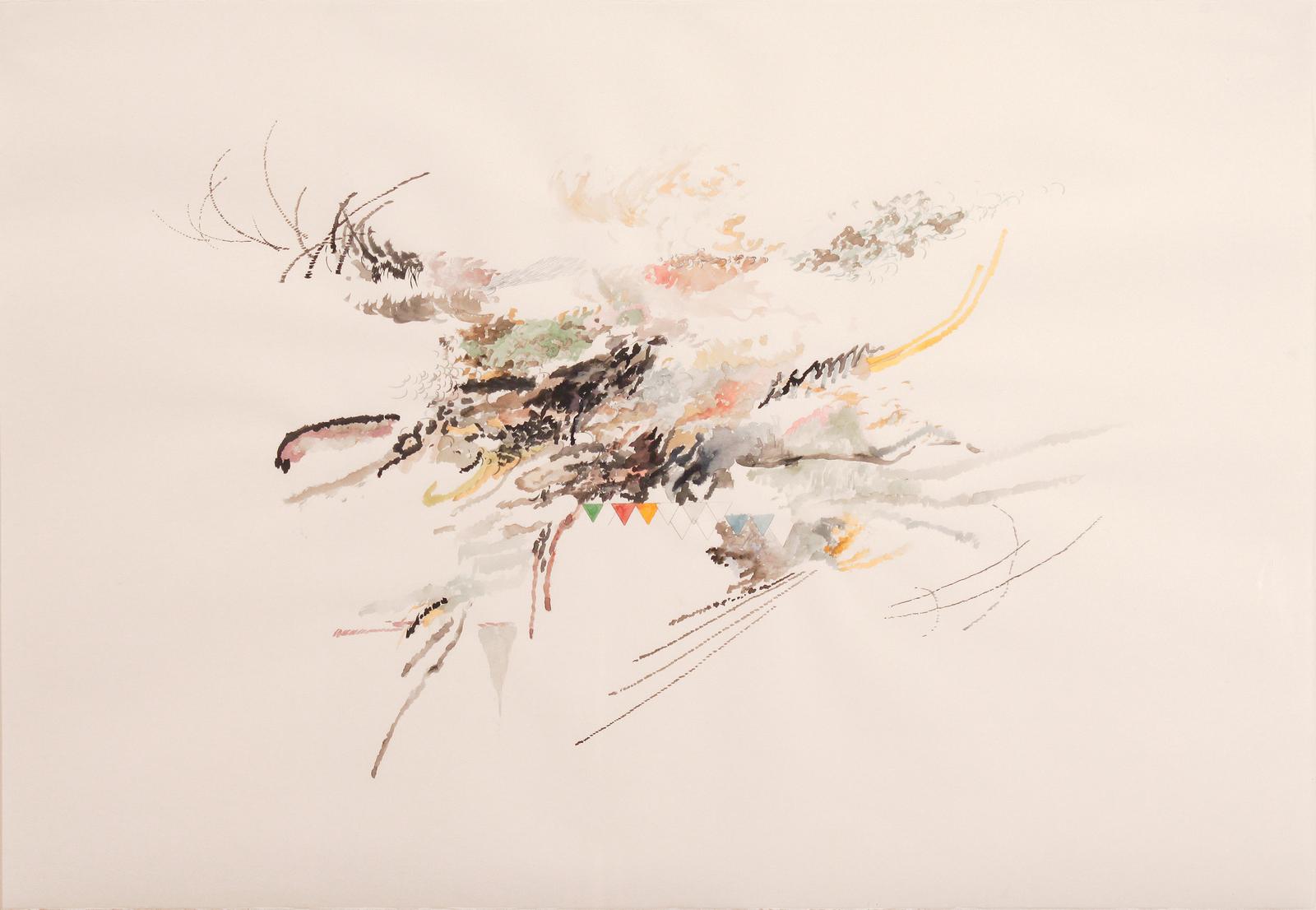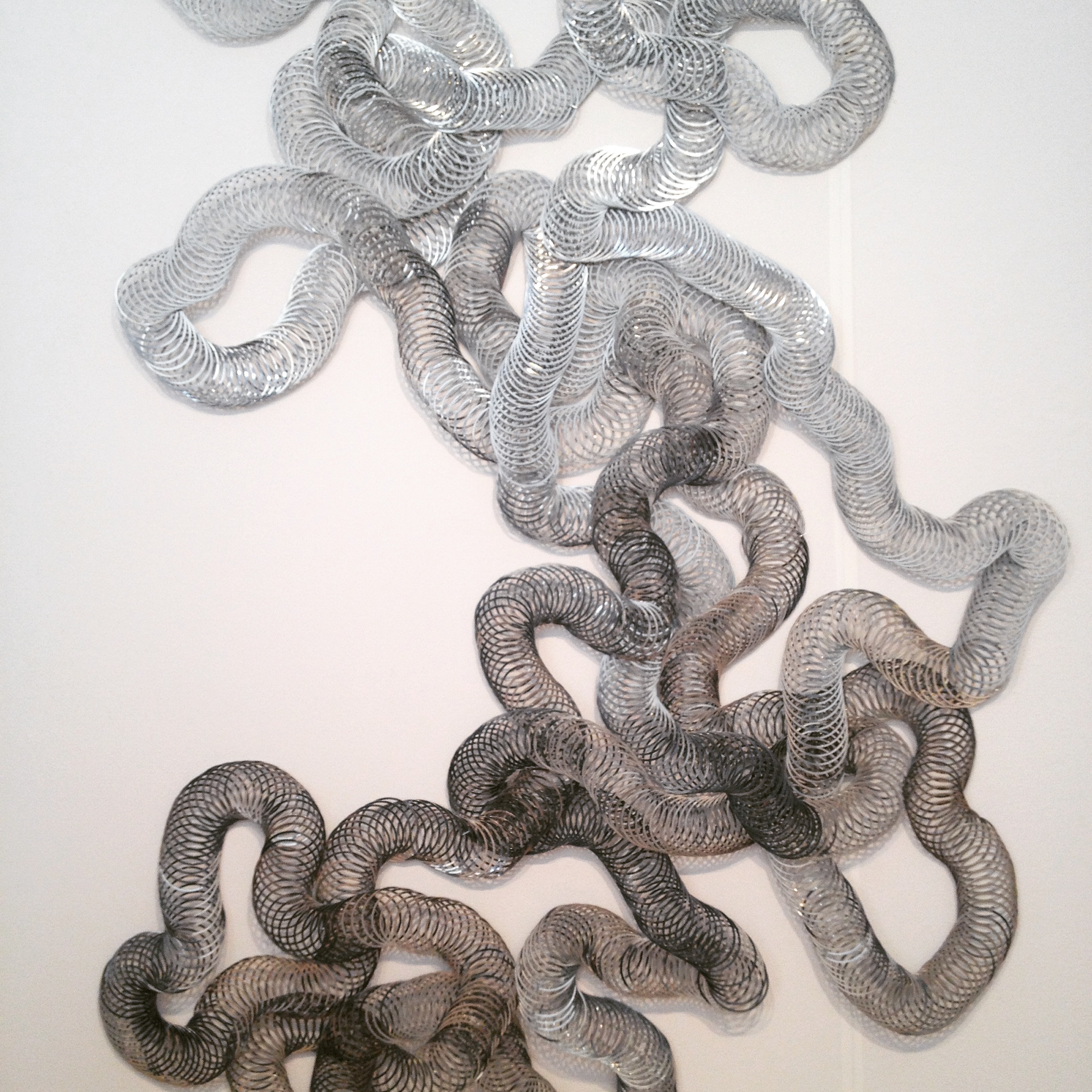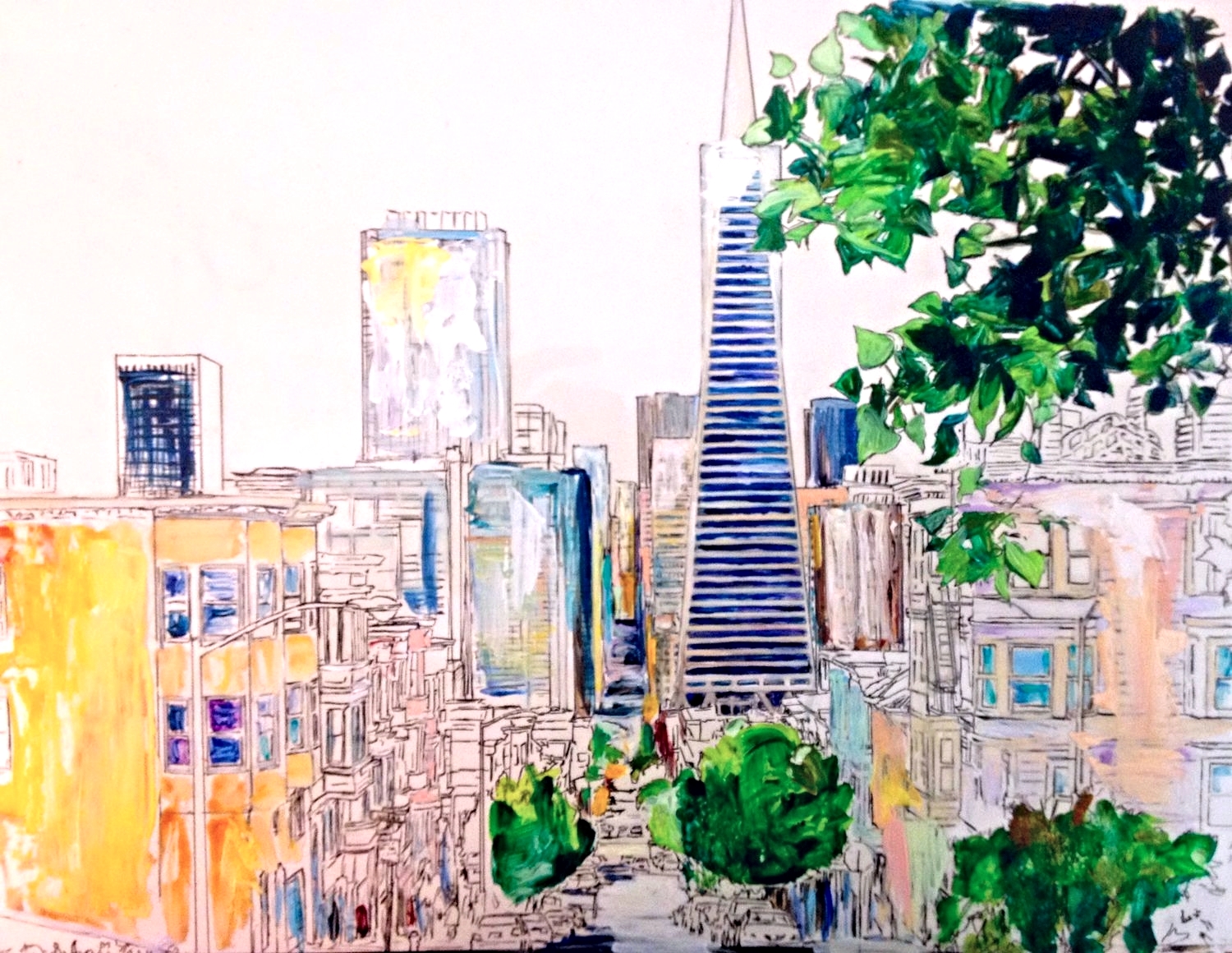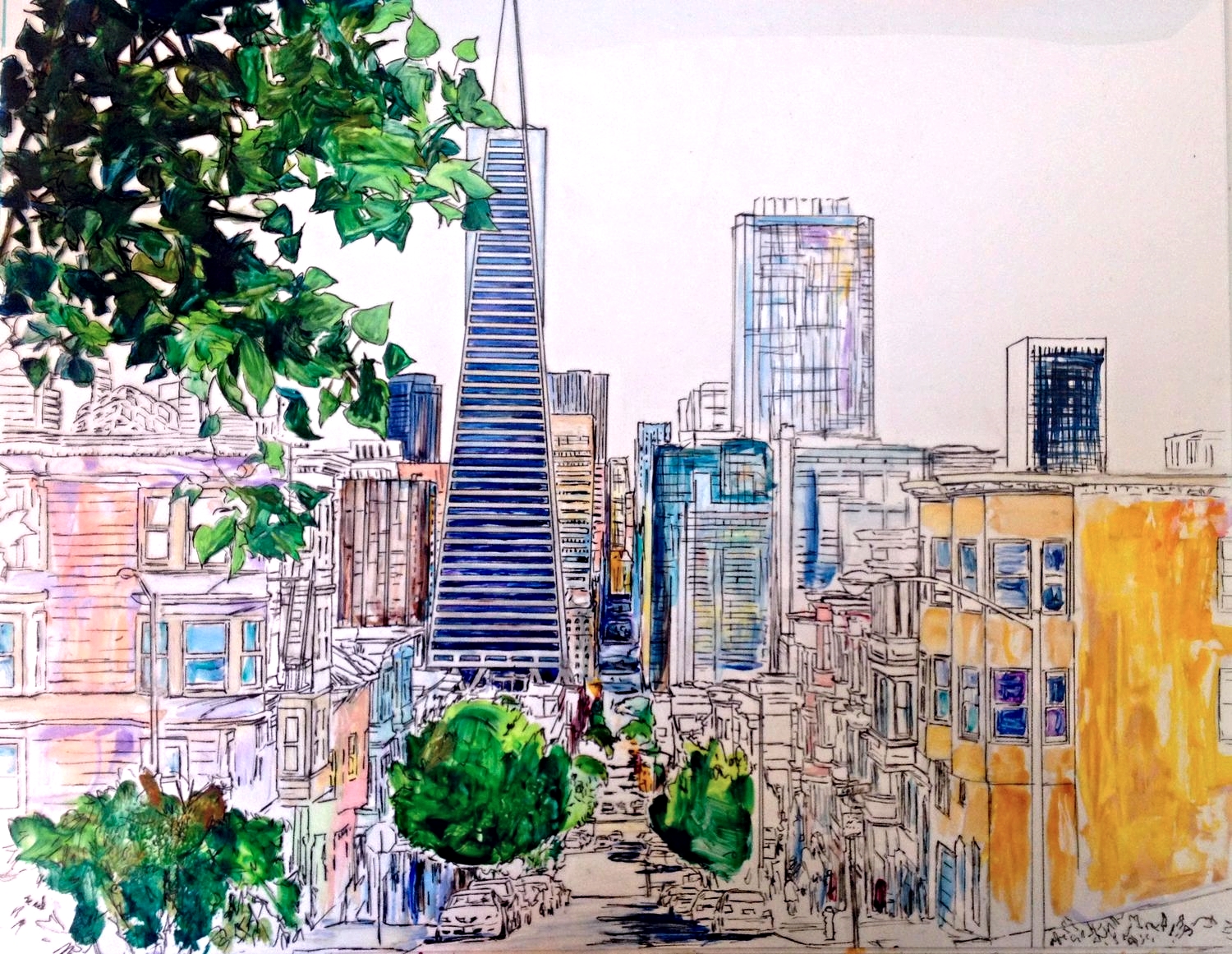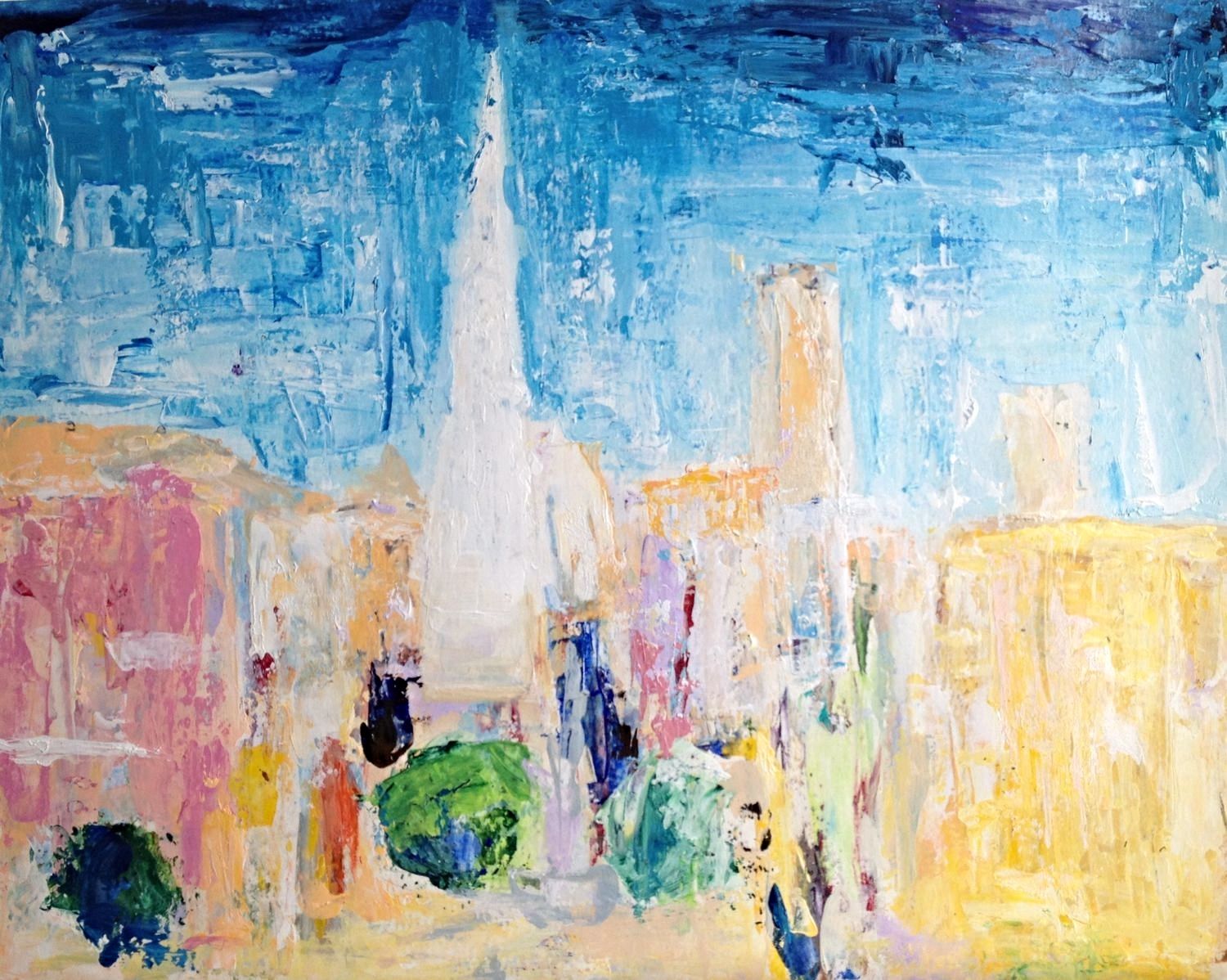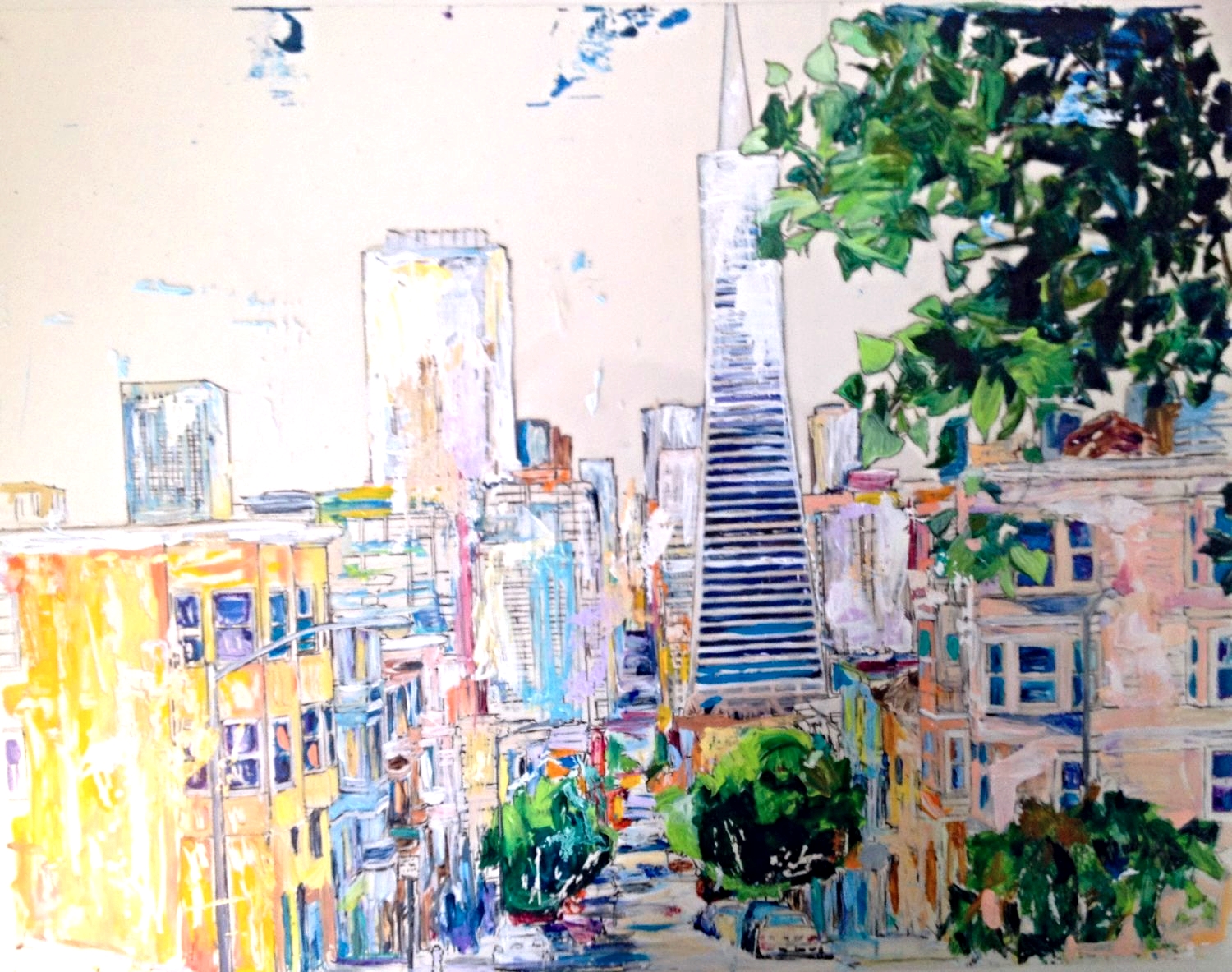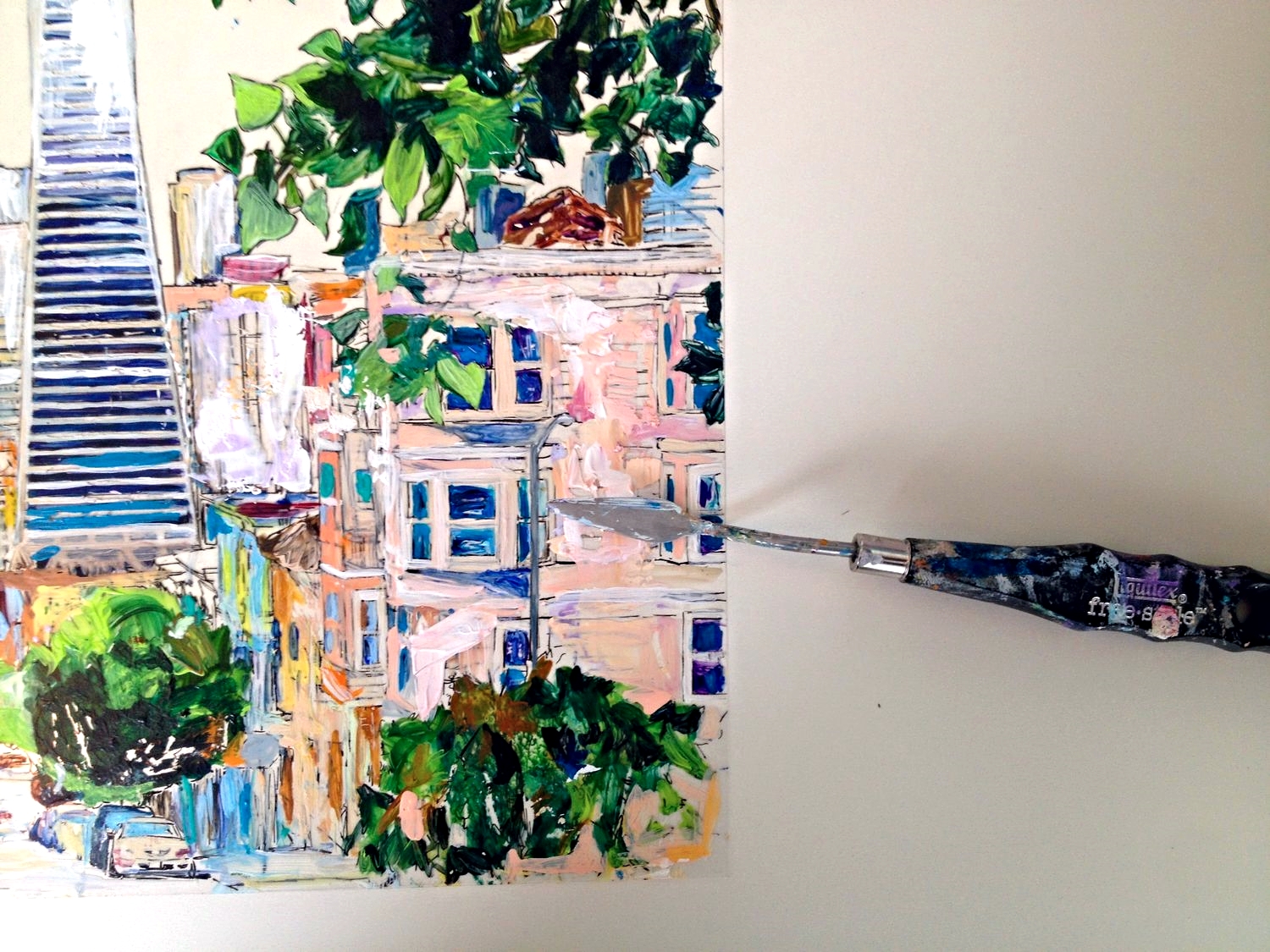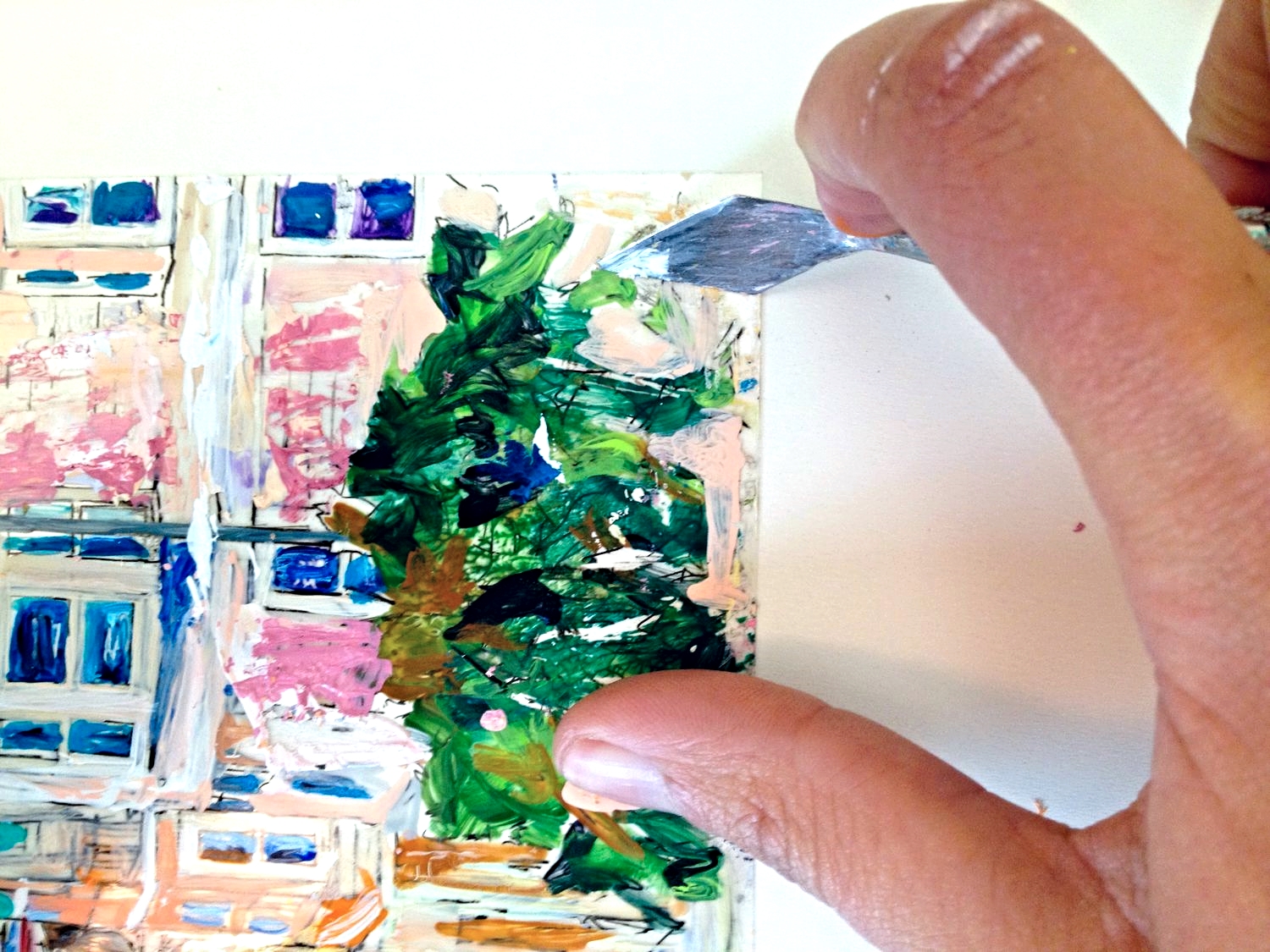I had the pleasure of recently speaking with the French artist Dominique Caron. Her paintings evoke the gestural force of abstract expressionism, yet her work is incredibly refined. She makes abstract painting look easy. Controlling such chaos is very difficult. Her paintings seem to sing like a Kandinsky work does.
Dominique always painted but her art career started in San Francisco. She was born in France, then spent her 20s living in Africa. Returning to France after being abroad seemed unthinkable, and so she moved to the Bay Area. In California, she started making tribal masks like the ones she had seen in Africa. They were soon being sold in galleries. I was interested in speaking with her not so much about her work, but about her path to becoming a successful artist. I wanted to know what advice she might have for young artists wanting to pursue art as a full time career. Here are some highlights from our conversation and you can seen her work here.
Think of yourself as a businesswoman. You are running a business.
Network network network.
Reinvest 10-15% of your profit back into your business.
Emails are ok, but printed cards are better. People will delete emails but keep cards.
Work big and do not make prints.
Never mark your work down, ie put "sale" next to a price. It cheapens your artwork.
It is better to price your work a little low than have it be overpriced.
The return on showing at cafes and non-gallery venues is very low.
Buy canvases in packs of twenty. Make a lot of work. Two out of ten paintings will sell so make fifty.
If you have an idea or something that you are passionate about, express it. You can work in different themes.
Work on several paintings at once.
Make a budget.
There is a lot of competition, but a lot of people are not really good.
If you have to get a job in the beginning, get a job in the arts.
